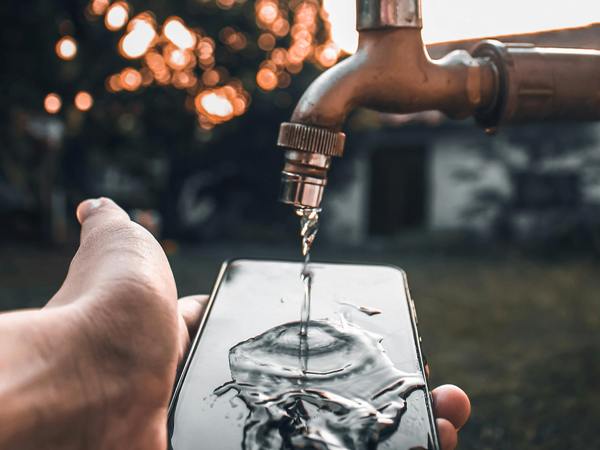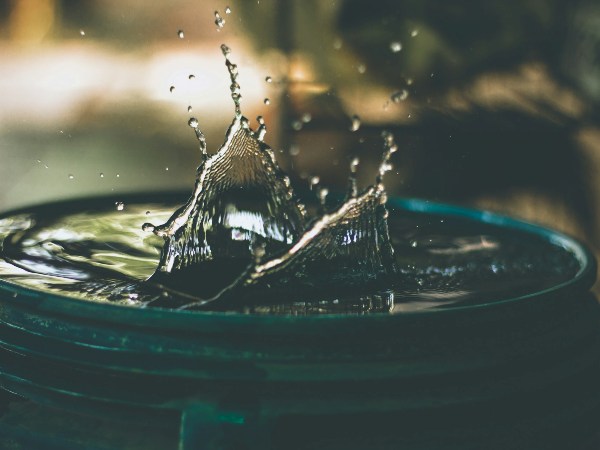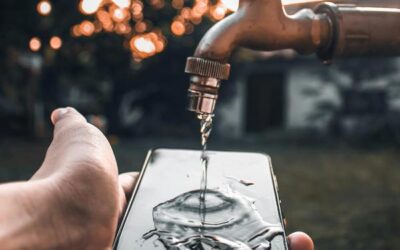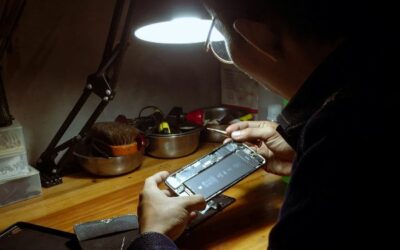My iPhone Got Wet and Won’t Turn On? Here’s Exactly What to Do My iPhone Got Wet and Won't Turn On? Here's Exactly...
Phone Water Damage Repair

Imagine that you are sitting at home and working with your phone, suddenly the glass of water falls down or imagine that you are next to a pool and your phone falls into the water and many other possible scenarios. What would you do? Some people get nervous and forget to manage the damage immediately and those people will probably lose their phones so do not be “those people”. When your phone is damaged, just by following some easy steps, you can have an iPhone water damage repair procedure by yourself.
Save your phone
Yes, when you are facing a surprising situation like your phone in the water, your brain may stop and probably you will watch your phone getting closer to the full damage condition. The first thing that you need to do is to get your phone out of the water as fast as you can and then follow the following steps.
Turn off your iPhone
When you are facing a water damage iPhone, before anything else just turn off your phone and do not turn it on until you are sure your phone is dry. Fight with everything that makes you turn on your phone because this will do a lot of damage to your phone. This step, like the last one, needs speed and fast reaction. You should turn off your phone immediately.
Remove your phone case
Before thinking about drying the interior moisture, try to dry the exterior. The first step is removing your case in order to start the “iPhone water damage repair” phase. After removing it, try to dry your phone with a soft towel and absorb every single drop of water from the surface of your phone. Even if you have a screen protector, remove it and absorb the liquid completely.
Save your SIM Card
When you are dealing with a water damage iPhone, you should know that even if you cannot save your phone, there is a good chance that you can save your SIM Card. Of course, it is not an absolute fact because it depends on the depth of water and the time your phone was in the water. Besides saving the SIM Card, by removing it, the interior parts of your phone will get dry sooner because there is a chance that liquid is still in your phone.

Try to absorb the liquid out of your iPhone’s ports
An important step in iPhone water damage repair is drying the port because they are in a more delicate condition. In fact, these ports are the way that liquid can go inside your phone so try to drop out the liquid from your lightning or headphone ports. Try to make the way open for water to escape through these ports then the chance of recovering your phone will get higher.
Cover your phone with a dry soft cloth
After you cleaned the exterior parts of your phone, wrap it in a dry soft cloth so the damaged phone would rest for a while. If you think it is necessary, you can use two towels and then put them in a bag or just let them rest on a flat surface.
Just remember, do not turn it on under any condition for 24 or 48 hours depending on how serious the damage is. Put your iPhone in a warm and dry place and do not do anything else for iPhone water damage repair.
Avoid putting your phone in rice
Many people think that putting phones in rice can be a good solution and the rice will drop out of the water but this is false information. This strategy has nothing to do with repairing your phone. Even in some cases, because the ports are small, rice can go into them and you will face bigger damage than water damage iPhone, just because you handled the first one wrong.
Take it to a repair store
After doing all the steps above, you may need to take your iPhone to a professional because sometimes they can do more than you can. You can take your phone to a nearby store or take it to the Apple centre. You can search iPhone water damage repair near me, and go to the nearest local technician. Just remember that doing all the steps above is necessary and try to do them before taking it to a technician.
Water damage indicator
When you take your water damaged iPhone to repair technicians, after asking some questions about what you have done to save the phone, they will check the damage indicator. This indicator is a small piece that can tell the technician whether the phone is facing serious water damage or not. Even you yourself can check the damage indicator.
Searching about iPhone water damage repair cost
The cost of repairing depends on whether you have Apple care+ or not. If you have apple care+ and coverage, according to Apple, you have to pay 99$ for water damage repair. However, if you do not have Apple care+, you should pay much more money to the Apple centre in order to repair your phone. iPhone water damage repair cost without Apple care+ is about 599$. Just pay attention that neither the Apple One-Year Warranty nor the Apple Care Protection Plan covers water damage repair for iPhone. If you do not want to use Apple centre services, you can use local repair stores too and the prices will be different based on the damage.
Have a record of your phone activities after repairing
The last thing is that when you repair your phone in-home or by a technician, you should pay close attention to your phone’s condition a month after the incidents. Because the battery, the camera or the home button may have got long term damaged and by ignoring these problems after iPhone water damage repair, you will face serious problems in future.
iPhone Repair is one of the Phonebulance services. If you need this service, you can provide your contact information to connect with our team.
Related Articles
Is Your Phone Still Waterproof With a Cracked Back 2025
Introduction Water resistance is a major selling point of modern smartphones. But what happens when that protective...
3 Myths About Waterproof Phones: Is Yours Still Safe for a Dip?
We've all been there: lounging by the pool, phone precariously balanced on the edge, when a rogue wave (or clumsy...
Water Damaged Phone? Here’s How Our Laguna Niguel Repair Experts Can Save It
https://phonebulance.com/water-damaged-phone-heres-how-our-laguna-hills-repair-experts-can-save-it/...
Water Damaged Phone? Here’s How to Save Your Drowned Smartphone
The Dreaded Dip: What Happens When Your Phone Gets Wet Water and electronics are a disastrous combination. When your...
Unlocking the Secrets of Water Damage Repair
Introduction Water damage can wreak havoc on your home or property, causing significant structural and aesthetic...
How to recover data from water-damaged iPhone that won’t turn on with a ruined charging port?
One of the main concerns of users is about how to recover data from water-damaged iPhone that won't turn on....
What to do before phone repair | All you need to know before repairing your phone
What to do before phone repair | All you need to know before repairing your phone It has happened to all of us that...
What to do with a damaged phone? Repair or Buy a new one?
Deciding to buy a new phone is not an easy task, as it requires money. In many cases, repairing a phone can solve the...
How to Know if Your iPhone is Waterproof? | Which iPhones Models are Waterproof?
When it comes to waterproofing a phone, most people think that they can drop their phone without a waterproof phone...







